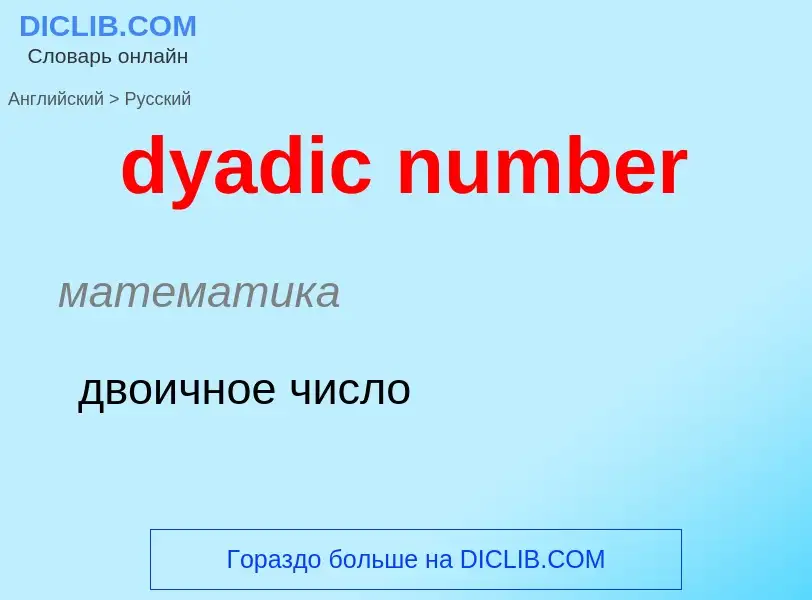Vertaling en analyse van woorden door kunstmatige intelligentie ChatGPT
Op deze pagina kunt u een gedetailleerde analyse krijgen van een woord of zin, geproduceerd met behulp van de beste kunstmatige intelligentietechnologie tot nu toe:
- hoe het woord wordt gebruikt
- gebruiksfrequentie
- het wordt vaker gebruikt in mondelinge of schriftelijke toespraken
- opties voor woordvertaling
- Gebruiksvoorbeelden (meerdere zinnen met vertaling)
- etymologie
dyadic number - vertaling naar russisch
математика
двоичное число
математика
p-адическая метрика
Wikipedia
In mathematics, the p-adic number system for any prime number p extends the ordinary arithmetic of the rational numbers in a different way from the extension of the rational number system to the real and complex number systems. The extension is achieved by an alternative interpretation of the concept of "closeness" or absolute value. In particular, two p-adic numbers are considered to be close when their difference is divisible by a high power of p: the higher the power, the closer they are. This property enables p-adic numbers to encode congruence information in a way that turns out to have powerful applications in number theory – including, for example, in the famous proof of Fermat's Last Theorem by Andrew Wiles.
These numbers were first described by Kurt Hensel in 1897, though, with hindsight, some of Ernst Kummer's earlier work can be interpreted as implicitly using p-adic numbers. The p-adic numbers were motivated primarily by an attempt to bring the ideas and techniques of power series methods into number theory. Their influence now extends far beyond this. For example, the field of p-adic analysis essentially provides an alternative form of calculus.
More formally, for a given prime p, the field Qp of p-adic numbers is a completion of the rational numbers. The field Qp is also given a topology derived from a metric, which is itself derived from the p-adic order, an alternative valuation on the rational numbers. This metric space is complete in the sense that every Cauchy sequence converges to a point in Qp. This is what allows the development of calculus on Qp, and it is the interaction of this analytic and algebraic structure that gives the p-adic number systems their power and utility.
The p in "p-adic" is a variable and may be replaced with a prime (yielding, for instance, "the 2-adic numbers") or another expression representing a prime number. The "adic" of "p-adic" comes from the ending found in words such as dyadic or triadic.

